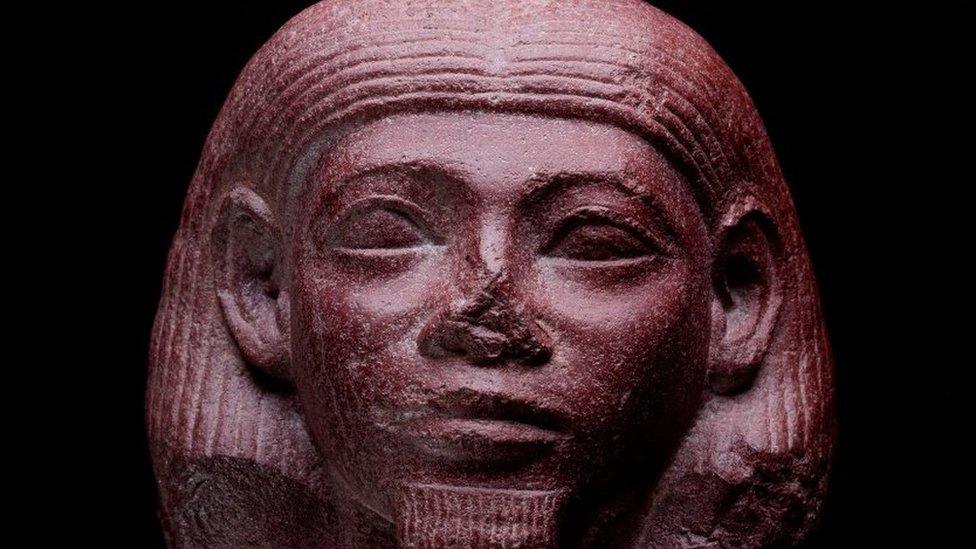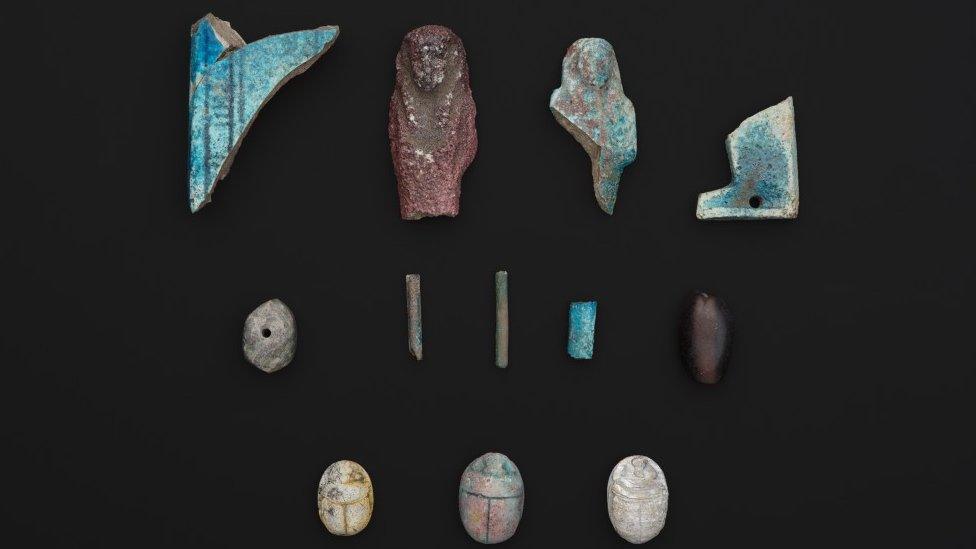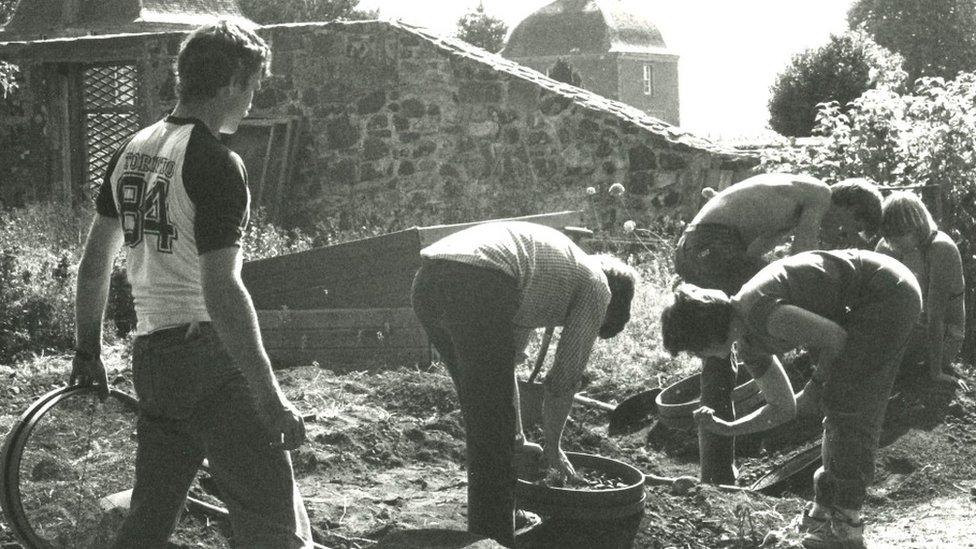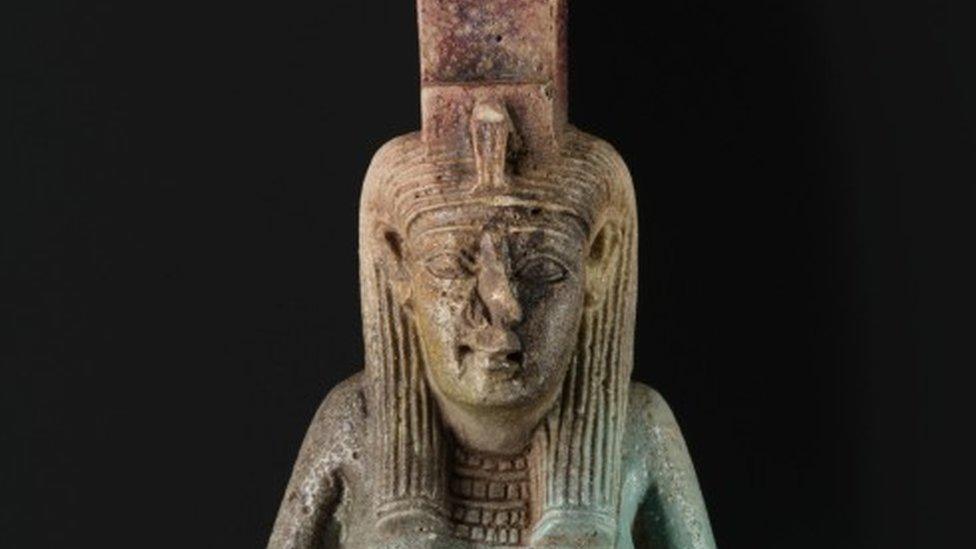Museum display shows how Egyptian artefacts were discovered in Fife school
- Published
- comments

This statue of a man comes from the mid-12th dynasty of Ancient Egypt, which was around 1991-1778 BC
In 1957, a pupil got into trouble in class, and was told to help dig for potatoes as his punishment. What he pulled out the ground ended up being one of the most exciting discoveries of his life.
It was an Egyptian sandstone carving, which he mistook to be a potato when he first discovered it!
After a few more findings were made in the same area, a team investigated the school site and discovered an incredible range of Egyptian artefacts.
Over 60 years later, all the findings are being displayed by National Museums Scotland.
How were all the discoveries made?

All of these discoveries were uncovered at Melville House
After the 1957 'not a potato' discovery, there were several more.
In 1966, one pupil uncovered another small statue whilst doing a vault in PE and landing on it.
The teacher looking after the pupils that day happened to be the same boy who made the potato digging discovery in 1957!
He decided to take the statue to the Royal Scottish Museum - which is now the National Museum of Scotland - to be investigated.
In 1984, a group of teenagers took a metal detector out around the school grounds and discovered even more treasure - this time a bronze figure, also from Egypt.
Experts found that the three objects were connected, and set out a plan to investigate the grounds. The site was Melville House, which used to be a stately home, but had been turned into a school.
How did Egyptian artefacts get up to Fife?

Volunteers worked on the grounds to try and dig up more secrets
Archaeologists still don't have a full idea on why the objects were there.
One theory is that they were taken by a Lord who used to live at Melville House, where all the discoveries were made.
He was called Alexander, Lord Balgonie, and he visited Egypt in 1856 with his family.
He died a year later, but his sisters still lived in the house.

This sculpture shows the Egyptian god Isis. It's from the Ptolemaic Period, which was around 664-30BC
This is a fascinating collection, made all the more so by the mystery surrounding its origins in this country.
At this time in Egypt it was quite common for people to sell old statues or figurines like this.
Historians think the objects were kept in a building outside the house, and when this building was knocked down, the figurines were buried in the ground.
